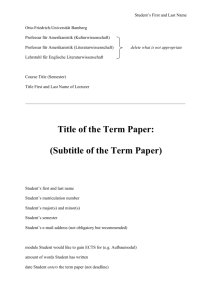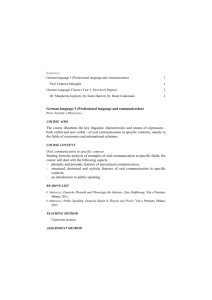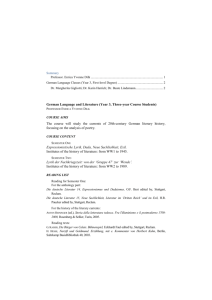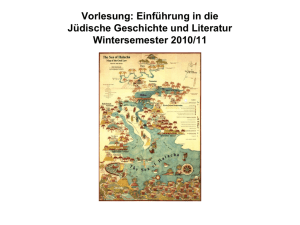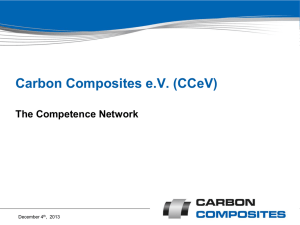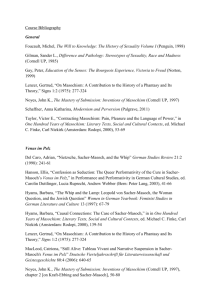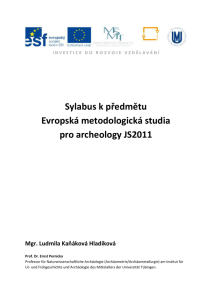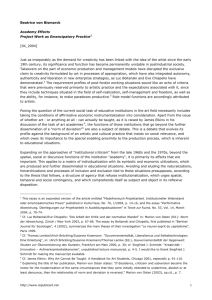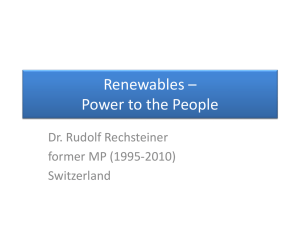classes barbara
advertisement
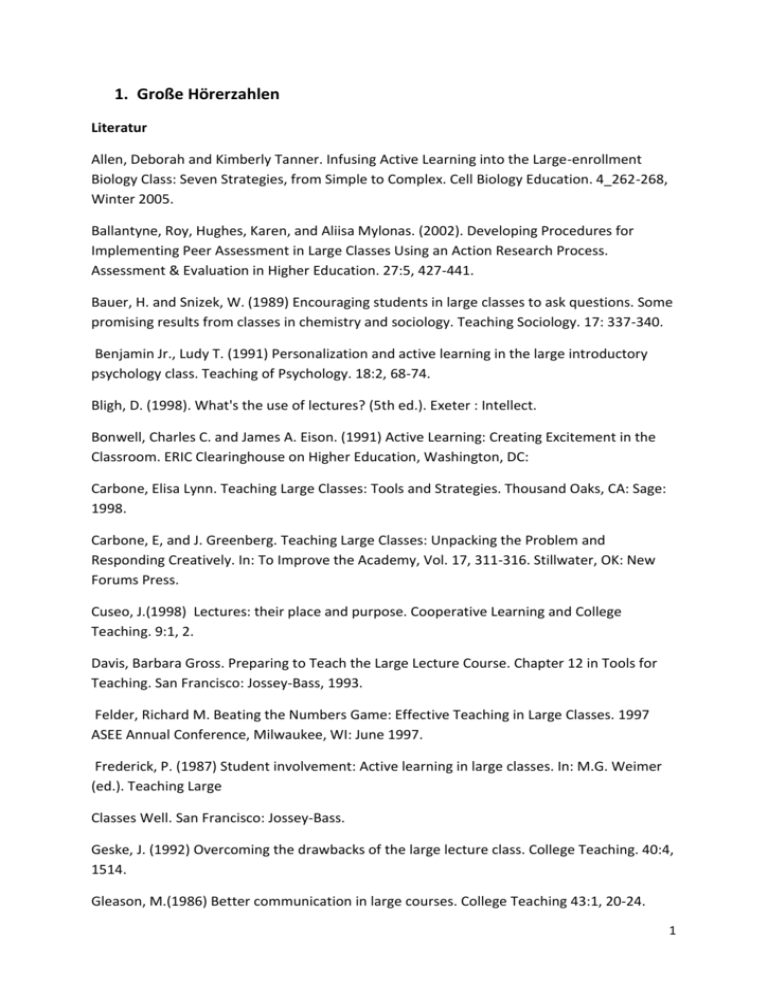
1. Große Hörerzahlen Literatur Allen, Deborah and Kimberly Tanner. Infusing Active Learning into the Large-enrollment Biology Class: Seven Strategies, from Simple to Complex. Cell Biology Education. 4_262-268, Winter 2005. Ballantyne, Roy, Hughes, Karen, and Aliisa Mylonas. (2002). Developing Procedures for Implementing Peer Assessment in Large Classes Using an Action Research Process. Assessment & Evaluation in Higher Education. 27:5, 427-441. Bauer, H. and Snizek, W. (1989) Encouraging students in large classes to ask questions. Some promising results from classes in chemistry and sociology. Teaching Sociology. 17: 337-340. Benjamin Jr., Ludy T. (1991) Personalization and active learning in the large introductory psychology class. Teaching of Psychology. 18:2, 68-74. Bligh, D. (1998). What's the use of lectures? (5th ed.). Exeter : Intellect. Bonwell, Charles C. and James A. Eison. (1991) Active Learning: Creating Excitement in the Classroom. ERIC Clearinghouse on Higher Education, Washington, DC: Carbone, Elisa Lynn. Teaching Large Classes: Tools and Strategies. Thousand Oaks, CA: Sage: 1998. Carbone, E, and J. Greenberg. Teaching Large Classes: Unpacking the Problem and Responding Creatively. In: To Improve the Academy, Vol. 17, 311-316. Stillwater, OK: New Forums Press. Cuseo, J.(1998) Lectures: their place and purpose. Cooperative Learning and College Teaching. 9:1, 2. Davis, Barbara Gross. Preparing to Teach the Large Lecture Course. Chapter 12 in Tools for Teaching. San Francisco: Jossey-Bass, 1993. Felder, Richard M. Beating the Numbers Game: Effective Teaching in Large Classes. 1997 ASEE Annual Conference, Milwaukee, WI: June 1997. Frederick, P. (1987) Student involvement: Active learning in large classes. In: M.G. Weimer (ed.). Teaching Large Classes Well. San Francisco: Jossey-Bass. Geske, J. (1992) Overcoming the drawbacks of the large lecture class. College Teaching. 40:4, 1514. Gleason, M.(1986) Better communication in large courses. College Teaching 43:1, 20-24. 1 Gibbs, Graham and Alan Jenkins. Teaching Large Classes in Higher Education: How to Maintain Quality with Reduced Resources. Stylus: 1992. Hedges, Larry V. and William Stock. (1983) The Effects of Class Size: An Examination of Rival Hypotheses. American Educational Research Journal. 20:1, 63-85. Johnson, D., Johnson, R., and Smith, K. (1991) Active Learning: Cooperation in the College Classsroom. Edina, MN: Interaction Book Co. Leonard, W., Journet, A., and Ecklund, R. (1988) Overcoming obstacles in teaching large enrollment lab courses. American Biology Teacher. 50:1, 23-28. Lewis, Karron G. Teaching Large Classes (How to Do It Well and Remain Sane). Chapter 25 in Handbook of College Teaching, edited by K.W. Pritchard and R. McL. Sawyer. Westport, Conn.: Greenwood Press, 1994. MacGregor, J., Cooper, J. L., Smith, K. A., & Robinson, P. (Eds). (2000). Strategies for energizing large classes: From Small Groups to Learning Communities. San Francisco: JosseyBass. Chapter 1, "The Argument for Making Large Classes Seem Small" (James L. Cooper and Pamela Robinson) Chapter 2, "Getting Started: Informal Small-Group Strategies in Large Classes" (James L. Cooper and Pamela Robinson) Chapter 3, "Going Deeper: Formal Small-Group Learning in Large Classes" (Karl A. Smith) Chapter 4, "Restructuring Large Classes To Create Communities of Learners" (Jean MacGregor) Chapter 5, "Implementing Small-Group Instruction: Insights from Successful Practitioners" (James L. Cooper, Jean MacGregor, Karl A. Smith, Pamela Robinson) Chapter 6, "Making Small-Group Learning and Learning Communities a Widespread Reality" (Karl A. Smith, Jean MacGregor). McKeachie, William J. Why Classes Should Be Small, but How to Help Your Students Be Active Learners Even in Large Classes and Large Classes: Morale, Discipline, and Order. Chapters 20 and 21 in Teaching Tips. 9th edition. Lexington, MA: Heath, 1994. Messineo, Melinda, Gaither, George, Bottm Jennifer, and Kristin Ritchey. Inexperienced Versus Experienced Students’ Expectations for Active Learning in Large Classes. College Teaching. 55:No. 3 Michaelsen, Larry K. (1983) Team Teaching in Large Classes. Chapter 2 in Learning in Groups. New Directions for Teaching and Learning Series, No. 14. San Franisco: Jossey-Bass. Michaelsen, Larry K., Black, R.H., and Fink, L.D. (1996). What every faculty developer needs to know about learning groups. In To Improve the Academy: Resources for Faculty, 2 Instructional and Organizational Development. Richlin, L. (Ed.). Stillwater, OK: New Forums Press. Michaelsen, Larry K., Fink, L. Dee, Knight, Arletta. (1997), Designing Effective Group Activities: Lessons for Classroom Teaching and Faculty Development. In: To Improve the Academy: Resources for Faculty, Instructional and Organizational Development. DeZure, D. (Ed.). Stillwater, OK: New Forums. Mills, Barbara. Helping Faculty Learn to Teach Better and “Smarter” Through Sequenced Activities. To Improve the Academy – find ref. Morabito, Melissa Schaefer and Richard R. Bennett. (2006) Socrates in the Modern Classroom: How Are Large Classes in Criminal Justice Being Taught? Journal of Criminal Justice Education. 17:1, 103-120. Olmstead, K. (1991) Using classroom research in a large introductory science course. New Directions for Teaching and Learning. 46, 55-65. Smith, Mary Lee and Gene V. Glass. (1980) Meta-analysis of Research on Class Size and Its Relationship to Attitudes and Instruction. American Educational Research Journal. 17:4. 419433. Stanley, C.A. & Porter, M.E. (Eds.) (2002). Engaging large classes: Strategies and Techniques for College Faculty. Bolton, MA : Anker Publishing Company, c2002. Switzer, Jamie S. (2004) Teaching Computer-Mediated Visual Communication to a Large Section: A Constructivist Approach. Innovative Higher Education. 29:2. Weimer, M. G. (ed.) (1987) Teaching Large Classes Well. New Directions for Teaching and Learning.32. San Francisco: Jossey-Bass. Iowa State http://www.celt.iastate.edu/teaching/tips.html Penn State http://www.schreyerinstitute.psu.edu/Tools/Large/ University of California, Berkeley http://teaching.berkeley.edu/bgd/largelecture.html University of Illinois http://www.oir.uiuc.edu/Did/Resources/Illini%20Instructor/largeclasses.html 3 University of Maryland http://www.cte.umd.edu/library/teachingLargeClass/guide/index.html University of Minnesota http://www1.umn.edu/innovate/tc.html University of Oklahoma http://www.ou.edu/pii/tips/ideas/3keys.html http://www.ou.edu/pii/tips/ideas/quick16.html http://www.ou.edu/pii/teamlearning/index.html http://pii.ou.edu/ 2. Klicker Beispiel für Audience Response System an deutschen Hochschulen - Universitätsklinikum Gießen und Marburg (Abteilung Hautklinik) - Universität Duisburg-Essen (Wirtschaftswissenschaftliche Fakultät) Prof. Mochty - Universität Stuttgart (Fakultät für Bauingenieurswesen) Prof. Friedrich - Universität Münster (Medizinische Fakultät SoSe 2009) https://medicampus.unimuenster.de/mars_doz.html - Universität Oldenburg http://be.informatik.unioldenburg.de/download/HandreichungQwizdom.pdf - Ruhr-Universität Bochum http://www.youtube.com/watch?v=oEqR0EitB4s Beispiele für Audience Response System an ausländischen Hochschulen - University of East Anglia http://www.uea.ac.uk/is/lt/tools/ars - University of Wisconsin Health Sciences http://www.med.wisc.edu/facilities/hslc/audience-response-system/26859 - University of Illinois http://www.uis.edu/ITS/iss/ars.html - Boston University http://www.bu.edu/tech/instructionalsupport/classroom/audience-response/ Forschungsergebnisse 4 1) http://www.turningtechnologies.com/responsesystemsupport/producttraining/cases tudies/ 2) http://edoc.ub.uni-muenchen.de/5111/1/Plischko_Rainer.pdf Dissertation LMU München: Mediale Gestaltung von Vorlesungen in der medizinischen Ausbildung mit Hilfe eines Audience-Response-Systems 3) Studie zur Verwendung von „Clickern“ in Klassen (University of Wisconsin) http://net.educause.edu/ir/library/pdf/EDU06283.pdf 4) Studie/Evaluation von ARS in Ingenieursstudiengängen an der Rowan University http://www.istl.org/10-winter/article1.html Literatur Anderson, Richard J. et al. (2003): Promoting Interaction In Large Classes With ComputerMediated Feedback. Computer Supported Collaborative Learning Proceedings. Banks, D. A. (2006): Audience response systems in higher education. Applications and cases. Information Science Pub.; Information Science Publ., Hershey, PA. Beatty, Ian (2004): Transforming Student Learning with Classroom Communication Systems, Educause Center for Applied Research Research Bulletin. Beatty, Ian D. et al. (2006): Designing effective questions for classroom response system teaching. American Journal of Physics, Bd. 74, 1. Crews, Tena B. et al. (2011): Clickers in the Classroom: Transforming Students into Active Learners. ECAR Research Bulletin 9. Davis, B. (1993): Tools for Teaching. San Francisco: Jossey Bass. Fies, Carmen/ Marshall, Jill (2006): Classroom Response Systems: A review of the Literature. Journal of Science, Education and Technology, Bd. 15. Hasler, Béatrice et al. (2009): „Annotated Lectures“: Student-Instructor Interaction in LargeScale Global Education. Journal of Systemics, Cybernetics and Informatics, 7(5). Jeschke, Sabina 2004: Mathematik in Virtuellen Wissensräumen – IuK-Strukturen und ITTechnologien in Lehre und Forschung. Online: http://deposit.d-nb.de/cgibin/dokserv?idn=971017182&dok_var=d1&dok_ext=pdf&filename=971017182.pdf Kay, Robin H./ LeSage, Ann (2009): A strategic assessment of audience response systems used in higher education. Australsian Journal of Educational Technology, 25(2), 235-249. 5 Kerres, M. (2003): Wirkungen und Wirksamkeit neuer Medien in der Bildung. In: R. KeillSlawik & Kerres (Eds), Education Quality Forum. Wirkungen und Wirksamkeit neuer Medien. Münster: Waxmann. Kerres, M. (2004): Zur Integration digitaler Wissenswerkzeuge in die Hochschule. In: Kruse, Elke et al. (Eds): Unbegrenztes Lernen – Lernen über Grenzen? Generierung und Verteilung von Wissen in der Hochschulentwicklung. Münster: LIT-Verlag. Ketteridge et al. (2002): The effective academic, in: Hartley, Peter (Ed) (2005): Enhancing Teaching in Higher Education. Helmerich, J. und Scherer J. (2007): Interaktion zwischen Lehrenden und Lernenden in Medien unterstützten Veranstaltungen, in: Neue Trends im E-Learning: Aspekte der Betriebswirtschaftslehre und Informatik, S. 197-210. Prensky, Marc (2001): Digital Natives, Digital Immigrants. In: On the Horizon. MCB University Press, Vol.9, No.5. Scheele, N. et al. (2004): Die interaktive Vorlesung in der Praxis. DeLFI 2004: die 2. eLearning Fachtagung Informatik, Tagung der Fachgruppe e-Learning der Gesellschaft für Informatik e.V. (GI), 6.-8. September 2004 in Paderborn. P-52, 283-294. Sellar, Melanie (2010): Poll Everywhere. Standard Review. The Charleston Advisor, January 2011. Online: http://docserver.ingentaconnect.com/deliver/connect/charleston/15254011/v12n3/s15.pdf ?expires=1330503883&id=67473240&titleid=75002231&accname=RWTH+Aachen+Hochsch ulbibliothek&checksum=C72E182E1A83A266C60718882EC9BA75 Trees, A.R./ Jackson, M.H. (2007): The learning environment in clicker classrooms: student processes of learning and involvement in large university-level courses using student response systems. Learning, Media and Technology, Vol. 32, No.1, pp.21-40. Veen, Wim (2006): Homo Zappiens. Growing up in a digital age. 6


